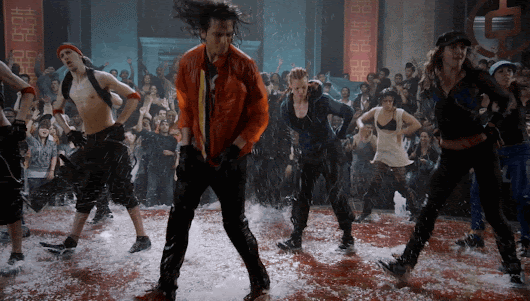A Moose in Manhattan
Let's talk 3D for a moment.
Hollywood has experimented with 3-Dimensional film-making on at least three separate occasions in its history. The first of those was in 1953.
In the face of multiple existential threats to its livelihood, the industry had grasped at every straw it could find in an effort to entice jaded audiences back into the cinemas. 3D was one of those straws.
Unfortunately, the 3D filming techniques of the 50s were complicated and expensive (two words that movie producers never like) and film-makers quickly settled on simpler methods of overwhelming their audiences.
So 3D faded into cinematic obscurity for a few decades, only to be revived again in the mid 1980s.
The 3D Craze of the 1980s was even shorter-lived than its 50s forebear. This was the era of the big-budget blockbuster franchise, and movie studios began to notice that audiences were starting to show signs of "sequel fatigue". It gets harder to entice people back into your movie theatre when the titles you are offering them are mostly the same ones you had sold them last year. And the year before that.
In the mood for a new movie? Your choices are... another Indiana Jones, another Halloween, another Superman etc. etc.
After several years of this (when the line-up of new films for each year looked just like the line-up of new films for the previous year, only now with new and exciting roman numerals) a few studios got the idea of releasing the "part III" of their franchises in 3D; thus enticing audiences back to some flagging properties while simultaneously enabling a bit of clever number-play on their film posters.
These mid-80s 3D films were uniformly awful (although Jaws 3D does at least have a very cute dog) and the second 3D renaissance died even faster than its 1950s predecessor.
Very little remains of that particular byway into cinematic history, but it might be of some small comfort to someone that the merest remnant of the 1980s 3D craze lives on in the modern Step-Up franchise.
Because Step Up 3, the third in the franchise, is actually Step Up 3-D.
By 2010 (when this film was released) the newest 3D craze was in full swing, propelled by the release of Avatar a year earlier. But the Step-Up movies are not big, noisy special-effects extravaganzas, filled with superheroes, monsters and smurfs. They are in fact very old-fashioned "let's-put-on-a-show" style musicals in the grand tradition of the 1930s Busby Berkeley films. And from this point onwards, they were in glorious 3D.
The plot of Step Up 3(D) is simplicity itself. Moose (the nerdy teenage supporting character from the previous film) has come to New York to attend college. Once there, he teams up with a group of street dancers who are hoping to win a high-stakes dance competition, thus saving their home from foreclosure. Along the way there is much spectacular dancing, and of course that dark moment before the grand finale when all is lost for our heroes.
But this is also the moment when the Step Up series really comes into its own.
A lot of that has to do with the stereoscopic photography. Dance was made to be filmed in 3D (what is dance, if not "objects in space"?) and the dance sequences in this film make maximal use of the added dimension.
This is also the film that wears its origins in plain sight.
Remember the character of Camille from the first Step Up film?
Played by Alyson Stoner, Camille was supposedly in foster care with Channing Tatum's character. In Step Up 3, Camille returns (four years older but still played by Alyson Stoner). Only now she is Moose's childhood friend and dance partner.
Familiar faces had a habit of turning up again and again in Busby Berkeley musicals, playing different characters (with different backstories) each time. It reinforced the idea that the movie studio was basically an enormous repertory company with a regular cast of performers.
And like Busby Berkeley, the choreographers of Step Up 3D have laboured to make the musical numbers increasingly astonishing... with one very notable exception: a completely unexpected dance routine that pays loving homage to an entirely different style of Hollywood dancing.
Nowhere is that Depression-era spirit more alive than in the Step Up franchise, and this is the film where it really comes into focus.
























Comments
Post a Comment